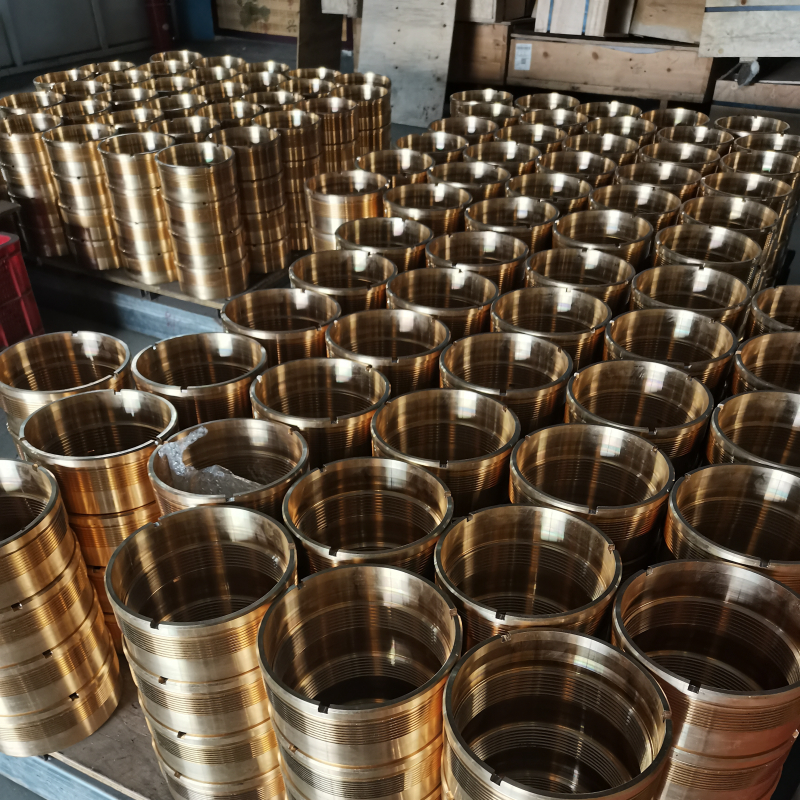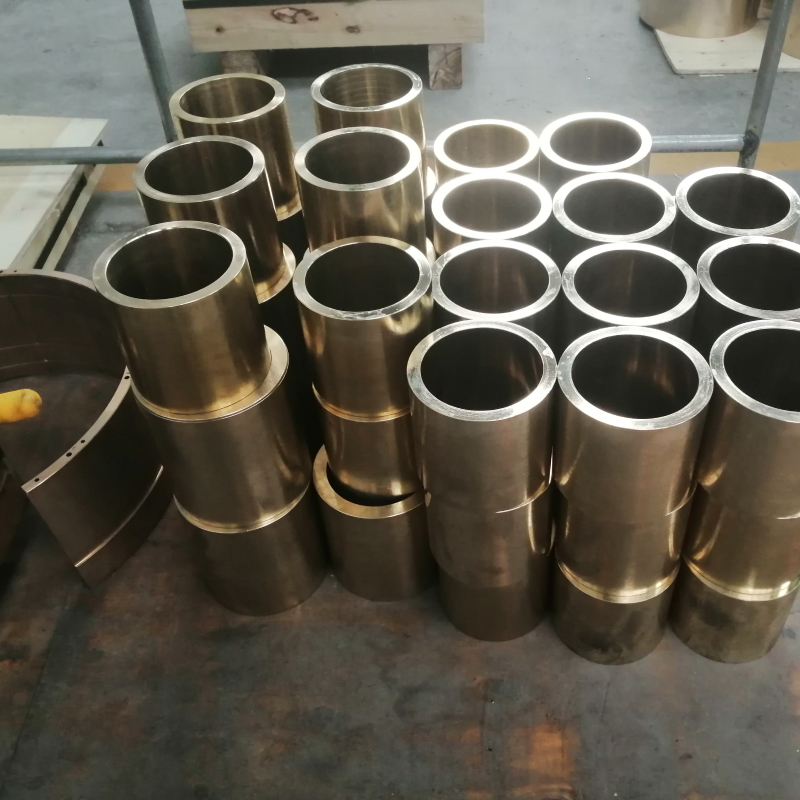Spectrometer testing is a technique for determining the composition and concentration of a substance by analysing the spectrum of light it emits or absorbs. A spectrometer is able to analyse the chemical composition of a substance by detecting the light emitted or absorbed by different elements in a specific wavelength range. This method is widely used in the testing of metallic materials, including the composition analysis of mechanical parts such as copper alloys, bronze bushings and brass bushings.
The process of spectrometer testing
Clean the surface of the sample: there may be oxidation layer, oil, dust or other impurities on the surface of the copper sleeve, which may affect the results of spectral analysis. Therefore, the surface of the copper sleeve must be cleaned before testing, and polishing tools can be used to remove the oxide layer or impurities.
Sample shape processing: Depending on the requirements of the spectrometer, the sample of the copper sleeve can be left in its original shape (suitable for spark spectrometers) or processed into standard shapes, such as flakes or small pieces (suitable for X-ray spectrometers), to ensure that the spectrometer probe can make good contact with or scan the sample.
Emission Spectrometer (OES) Excitation: When using an emission spectrometer for inspection, the spectrometer excites the surface of the copper sleeve by means of an electric spark or arc. The high energy generated by the spark or arc excites the elements in the copper sleeve, causing them to emit light of a specific wavelength. The wavelength and intensity of these rays are directly related to the chemical composition of the copper sleeve.

X-ray Fluorescence Spectrometer (XRF) Excitation: If an XRF spectrometer is used, the copper sleeve is exposed to X-rays, which excite the elements in the jacket to emit fluorescent light. The wavelength and intensity of these fluorescences can be used to analyse the chemical composition of the sample.
Decomposition Spectroscopy: The excited copper sleeve sample emits multiple wavelengths of light, which the spectrometer decomposes into different wavelength ranges using a grating or prism.
Collection of light signals: The decomposed light signals are collected by photomultiplier tubes or semiconductor detectors. The spectrometer will determine the type of element and its content in the copper sleeve based on the intensity of the light at different wavelengths.
Qualitative analysis: The spectrometer will match the detected light signals with the spectral characteristics of known elements to identify the specific elements contained in the copper sleeve.
Quantitative Analysis: By measuring the intensity of the light signal, the spectrometer determines the concentration or percentage content of each element. This data is used to assess whether the alloy composition of the copper sleeve is within the specified standard range.
Data Processing: The spectrometer's in-built software converts the spectral data into a readable chemical composition report showing the percentage content of each element in the copper sleeve.

Once the spectrometer has completed its analysis, a detailed test report is generated which lists the percentage content of each element (e.g. copper, zinc, tin, etc.) in the copper sleeve and compares it to the standard values.
The process of spectrometer testing of copper sleeve can effectively analyse the chemical composition of copper bushing to ensure that it meets the standards and requirements for use in the machinery industry.
| Previous:What are the advantages and disadvantages of copper bushing finish testing? | Next:In the copper casting process should pay attention to those things? |




 Copyright © 2022
Copyright © 2022